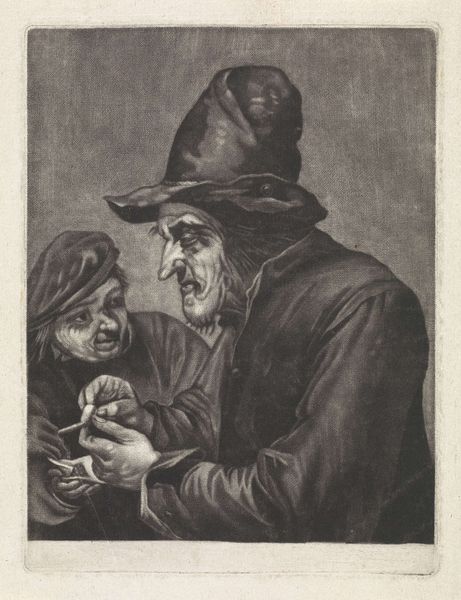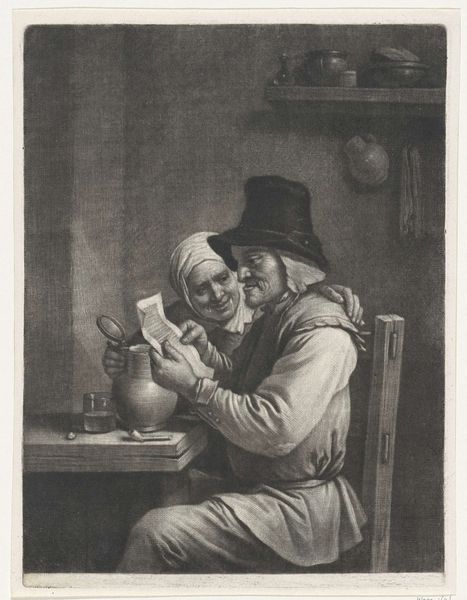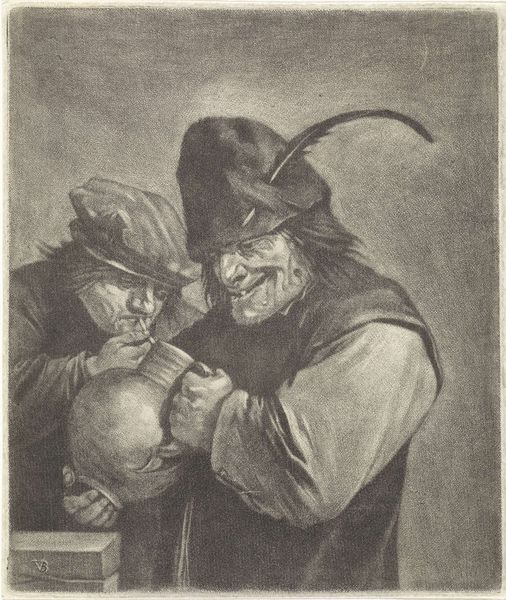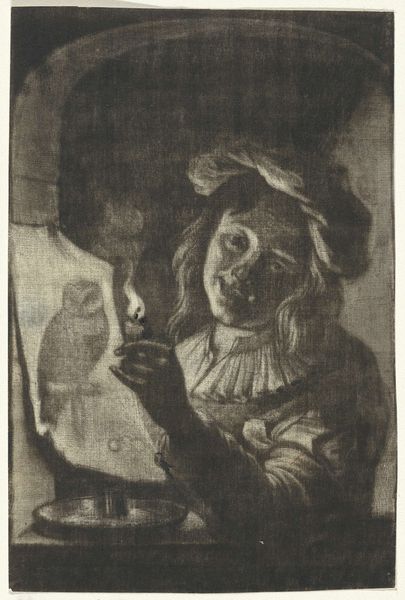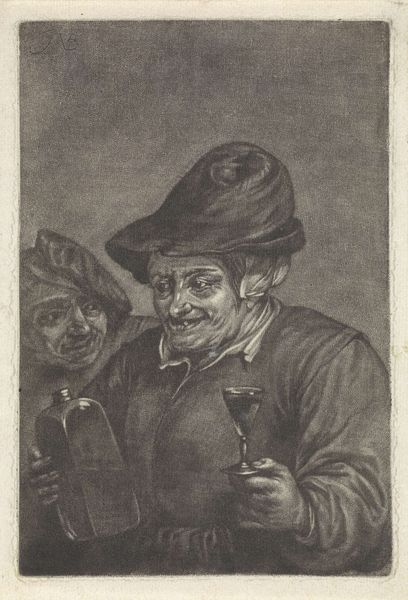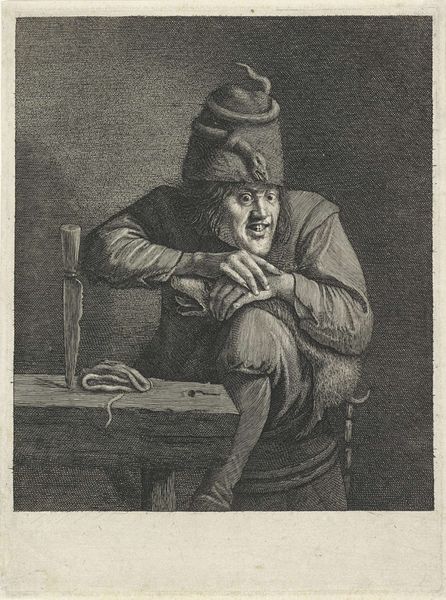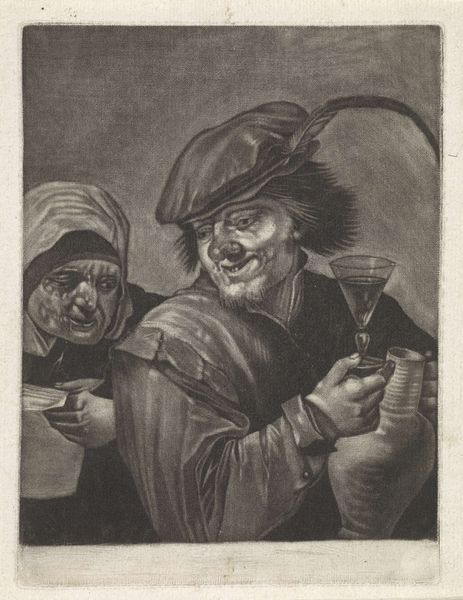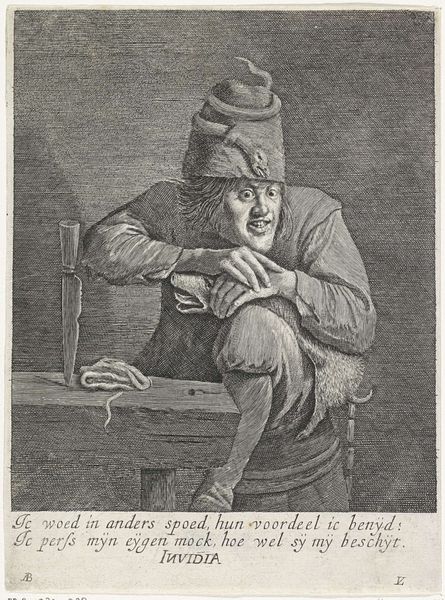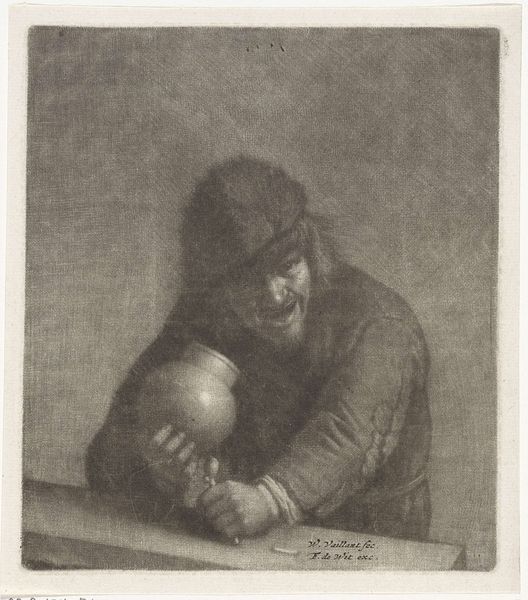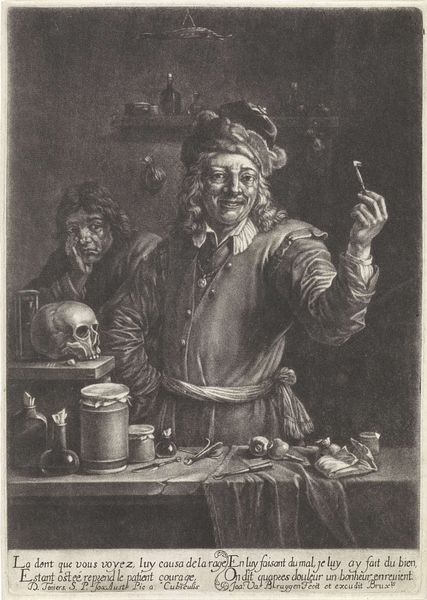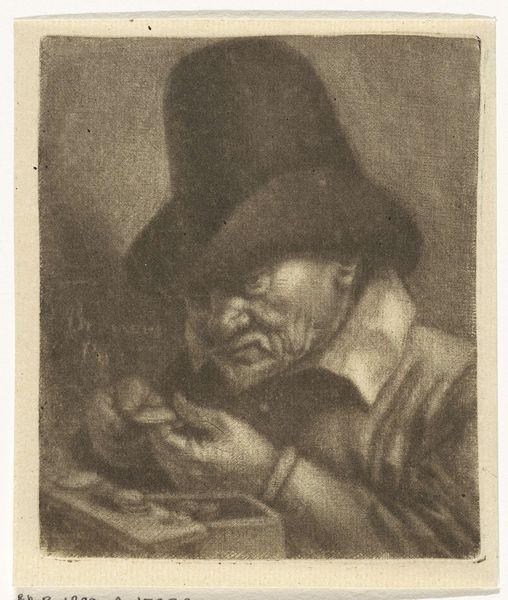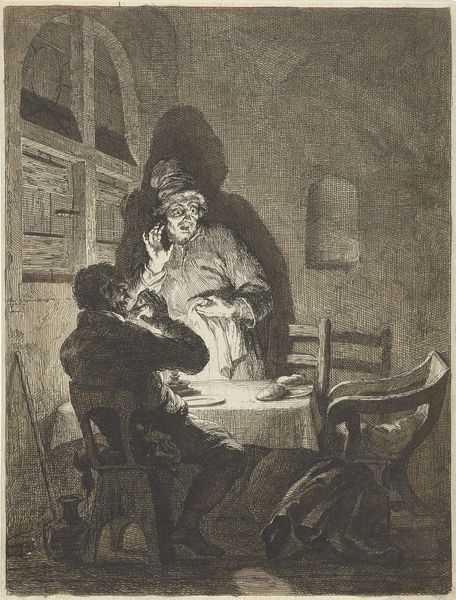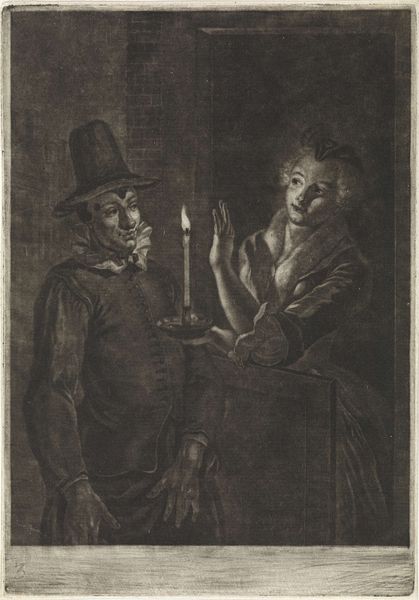
print, etching
#
portrait
#
facial expression drawing
#
baroque
# print
#
etching
#
caricature
#
caricature
#
portrait reference
#
portrait drawing
#
genre-painting
Dimensions: height 160 mm, width 130 mm
Copyright: Rijks Museum: Open Domain
Jan van der Bruggen made this etching, "Jongen met fluit", sometime between 1649 and 1709. It's a print, so the image exists in multiple, and its value resides not in the uniqueness of the hand, but in the artistry of its making. An etching begins with a metal plate, often copper. The artist covers it with a waxy, acid-resistant ground, then draws through the ground with a needle, exposing the metal. When the plate is submerged in acid, the drawn lines are "bitten" into the surface. The longer the bath, the deeper the lines, and the darker they will print. Ink is then applied to the plate, filling the etched lines, and the surface is wiped clean. Finally, paper is pressed against the plate, transferring the ink to create the image. This indirect process allows for detailed, tonal images to be made. Prints like these democratized art, taking it beyond the realm of unique paintings. Appreciating how they were made helps us understand their social role, challenging distinctions between high art and everyday culture.
Comments
No comments
Be the first to comment and join the conversation on the ultimate creative platform.
